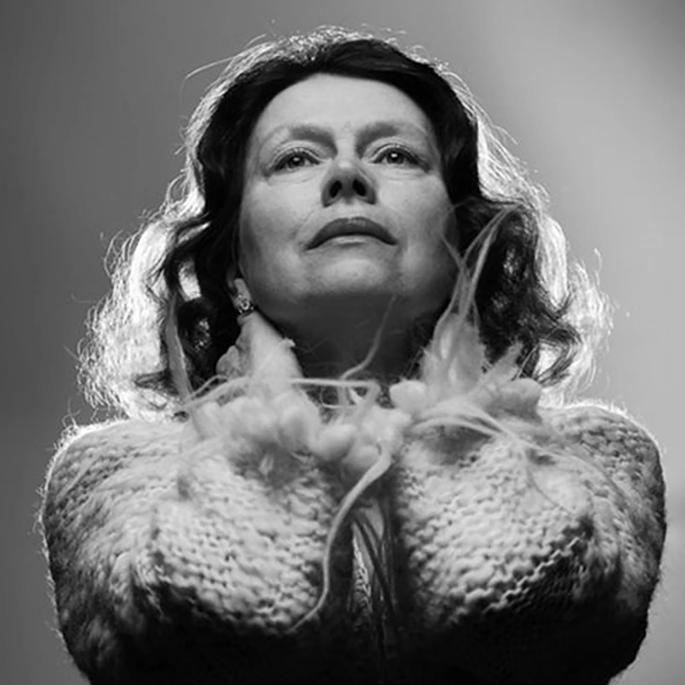
Balogh Máté – Fehér Renátó: Tél, avagy a fal füle – bemutató Máté Balogh: Winter, or the Ear of the Wall – premiere
14. ÉS 15. | 19.00
Zeneakadémia – Solti Terem
Liszt Academy – Solti Hall
Zenés színpadi mű vokális szólistákra, vegyeskarra és kamaraegyüttesre Musical play for solo voices, mixed choir and chamber orchestra
Előadják • Performed by: LADIK Katalin, BALOGH Eszter
Közreműködik • Featuring: Weiner Ensemble
(művészeti vezető • artistic director: PÁLFI Csaba), Pax et Bonum Kamarakórus • Pax et Bonum Chamber Choir
Vezényel • Conductor: KISS Boldizsár
Librettó • Libretto: FEHÉR Renátó
Látvány, jelmez • Production design, costumes: ERŐS Hanna
Bábkivitelező • Puppets made by: MAJOROS Gyula
A rendező munkatársa • The director’s assistant: SOLTÉNSZKY Ráhel
Rendező • Director: SZILVAY Máté
A bemutató a Liszt Ünnep keretében a Zeneakadémiával közös programként, a Müpa szervezésében valósul meg. • This production of the Liszt Fest is presented by Müpa Budapest as a joint event with the Liszt Academy.
For the English version see page 8.
Balogh Máté – Fehér Renátó: Tél, avagy a fal füle – bemutató Tél, avagy a fal füle című darabomon 2021 őszén kezdtem el dolgozni. Adéla Gálovától, a budapesti Cseh Centrum igazgatójától kaptam felkérést egy hangjátékra, amelynek története a terézvárosi Rózsa utca és Szegfű utca sarkán álló neoreneszánsz palotához kötődik. Az épület ma is a cseh nagykövetség és a cseh kulturális intézet otthona; a bejárata melletti emléktábla szerint Emanuel Zima, aki a háború előtt és alatt a követség gondnoka volt, fiával, Joseffel az alagsori szenespincében tizenhárom üldözött zsidó polgárt bújtatott a nyilas terror és az ostrom idején.
A Tél, avagy a fal füle tulajdonképpen egy dokumentumdráma és egy lírai monológ keresztezése, amelyben egy riporter folytat párbeszédet a túlélők kórusával mindarról, ami a követségi épületben és annak szenespincéjében 1944–45-ben történt. Ezzel párhuzamosan a menedéket nyújtó pincefal kap hangot: a fal mormogását, a fal imáját, a fal tanúságtételét hallani. Megszólal ez a némának hitt szem- és fültanú, elmondja, ami ráíródott, ami benne felszívódott, ami belé penészedett. A pincefal tesz vallomást történelemről, félelemről, múltról és jelenről, annak hitével, hogy volt és van szeretet, szolidaritás és menedék a mindenkori agresszió, megvetés és genocídium idején is. A forrásszegény alaphelyzet tette szükségessé, hogy a rendelkezésre álló valóságelemek köré egy fiktív oral history épüljön. A történet önmagában való színre vitele és megőrzése, a dokumentarista realizmus magától értetődősége azonban csak kiindulópont lehetett. Ezért az anekdotikus cselekményesítés és a karakterszínezés rutinja helyett inkább a helyszínt és a miliőt, a történelmi időpontot és az időtartamot, valamint az ideiglenes csoportidentitás, az üldözött-bujdosó-túlélő lét hatásait és hangulati-érzületi tapasztalatait tekintettem irodalmi alapanyagnak. Nem megeleveníteni akartam egy eseménysort, nem pusztán elmesélni: a célom egy olyan közlésmód volt, amely átjár, átitat, és már-már mantraszerűen beíródik. Ezt az esztétikai-retorikai szemléletet Balogh Máté zeneszerzői gyakorlata és a lassan évtizedes együtt gondolkodásunk is meghatározta. A kórusforma egyszerre származott közös alkotói érdeklődésünkből és jelentett dramaturgiai keretet. Hasonlóképpen „díszletezte be” a darabot a pince szűkös, sötét és klausztrofób menedéke: ezek nyelvi inspirációval is szolgáltak. A pincében töltött hónapok elképzelt örökkévalósága, a személyes időérzék kizökkenése pedig szintén poétikai következményekkel járt, hiszen kitágította a darab idejét, a történeti idő helyébe egyfajta alternatív időszámítást léptetett. Mindez univerzális tágasságot hozott a lokális történetbe. A fenyegetettség, a rejtőzködés, a bezártság, az elnémulás, a kiszolgáltatottság, a bizonytalanság, a bizalom és az intimitáskényszer életkörülményei így mind-mind részei lettek az alkotói koncepciónak, hogy aztán a
koncepcióból kompozícióvá lényegüljenek át. A darab lírai beszédmódját, a fal tudatelbeszélését tehát egy asszociatív nyelvi építkezés jellemzi, egy nyelvi kaleidoszkóp lép működésbe, amely mintha őrölné magába az élőbeszéd fordulatait, talált szövegeket, kulturális referenciákat, emlékfoszlányokat, hallgatásalakzatokat, szóbeszédet, testi, tárgyi és környezeti zajokat.
A tanúságtétel monológja így egyszerre lesz zaklatott és szemlélődő, rendezett és kaotikus, konkrét és elvont, eleven és letargikus. Mert miféle rémület és veszteség az olyan, amelyik kristálytiszta mondatokkal elevenedik meg, és nem mondatok roncsaival? Számomra a költészet ezeken a rommezőkön át vezet, át a törmeléken: megszólalásnak és elhallgatásnak ebben a nyomasztó és felszabadító határsávjában kell keresni a vigaszhoz a maradékszavakat. (Fehér Renátó)
LADIK Katalin
Ladik Katalin Újvidéken született. A vajdasági színész, performer, énekes, költő egyaránt aktív a színház és a képzőművészet területén. Irodalmi munkássága a versektől a hang- és vizuális költeményeken át a prózáig terjed, első regénye (Élhetek az arcodon?) 2007-ben jelent meg. Performanszaiban saját testét és hangját használja médiumként. A hetvenes években a Bosch+Bosch csoport tagja volt; számos happeningben és akcióban vett részt, és bekapcsolódott a mail art mozgalomba is. 1978-ban vizuális költeményeivel és kollázsaival szerepelt a Velencei Biennálén. 1977 és 1992 között az Újvidéki Színház színésze volt, de több TV-filmben is főszerepet kapott. 1991-ben Kassák Lajosdíjjal, 2001-ben József Attila-díjjal tüntették ki, 2016-ban Yoko Ono neki ítélte a LennonOno-békedíjat. 2017-ben meghívták a kasseli Documentára. Énekesként a horvát, a szerb és a magyar kortárs zene kiemelkedő egyéniségeivel működött együtt.
BALOGH Eszter
Az erdélyi születésű mezzoszoprán a Magyar Rádió Gyermekkórusában kezdte zenei tanulmányait. Mesterdiplomáját a Zeneakadémia oratóriumés dalének szakán szerezte 2014-ben. 2019-ben megnyerte a londoni Händel Énekversenyt. Repertoárja a barokktól a romantikán keresztül a kortárs zenéig terjed. Rendszeres közreműködője a hazai koncertéletnek, visszatérő szólistája a Budapesti Fesztiválzenekar barokk együttesének, a Vashegyi György által vezetett Purcell Kórusnak és Orfeo Zenekarnak, a Budafoki Dohnányi Zenekarnak és a MÁV Szimfonikusoknak. Fellépett többek között Kobajasi Kenicsiró, Oberfrank Péter, Dénes István, Hollerung Gábor, Németh Pál és Kovács László vezényletével. 2016-ban Helmuth Rilling keze alatt énekelte Bach János-passiójának altszólóját. 2014-ben
KISS BOLDIZSÁR
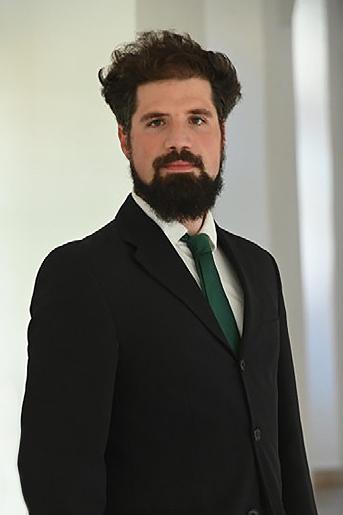
Fotó: Illyés Csaba
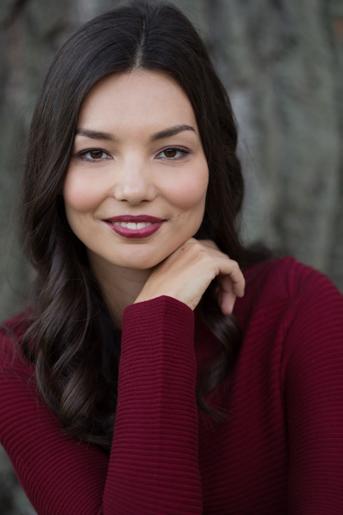
BALOGH ESZTER
debütált a Magyar Állami Operaházban Haydn A lakatlan sziget című operájának Costanzájaként, 2018-ban pedig A denevér Orlofszky hercegének szerepében volt látható a Pécsi Nemzeti Színházban. Ugyanebben az évben mutatkozott be Bernstein Trouble in Tahiti című operájának főszerepében a Müpában.
KISS Boldizsár
Kiss Boldizsár a Zeneakadémia Kodály Intézetének oktatója, a Zeneakadémia doktorandusza, 2022 óta vezeti a Pax et Bonum Kamarakórust. Tanulmányait a Zeneakadémián Párkai István, Erdei Péter és Somos Csaba irányítása alatt végezte, valamint Erasmus-ösztöndíjjal a berlini Hanns Eisler Főiskolán, Jörg-Peter Weigle osztályában is tanult. 2016 és 2019 között a Magyar Állami Operaház Gyermekkarának betanító karnagyaként és korrepetitoraként dolgozott, 2017 és 2023 között tanított a Szent István Zeneművészeti Szakgimnáziumban, 2019 és 2025 között pedig ő vezényelte Magyarország egyetlen hivatásos női karát, a Szolnoki Bartók Béla Kamarakórust, mellyel több Balogh-művet is bemutatott.
Weiner Ensemble
A Weiner Ensemble Gulyás Márta vezetésével 2014 szeptemberében alakult a Liszt Ferenc Zeneművészeti Egyetem végzős és doktorandusz hallgatóiból. Miután 2016-ban harmadik díjat nyertek az Orlando Nemzetközi Kamarazenei Versenyen Hollandiában, felléptek az Orlando Fesztiválon, emellett részt vettek Henk Guittart, James Austin Smith, Alan R. Kay és a Lafayette Quartet mesterkurzusain. Repertoárjuk a barokk korszak szólódarabjaitól a legfiatalabb generációkat képviselő szerzők kortárs ensemble-kompozícióiig terjed, és egyik céljuk, hogy bővítsék a Schönberg Pierrot lunaire című, énekbeszédre és öt hangszeresre írt kompozíciója után Pierrot-együttesnek nevezett formáció irodalmát. 2023-ban a Weiner Ensemble létrehozta saját kortárs zenei oktatási programját, a COnteMPASS Workshopot, amelynek keretében a középfokú zenei oktatásban részt vevő diákoknak mai magyar zeneszerzők művein keresztül mutatják be a kortárs zene fejlődésének történetét és nyelvét. A program tizenegy intézmény több mint 700 diákját érte már el.
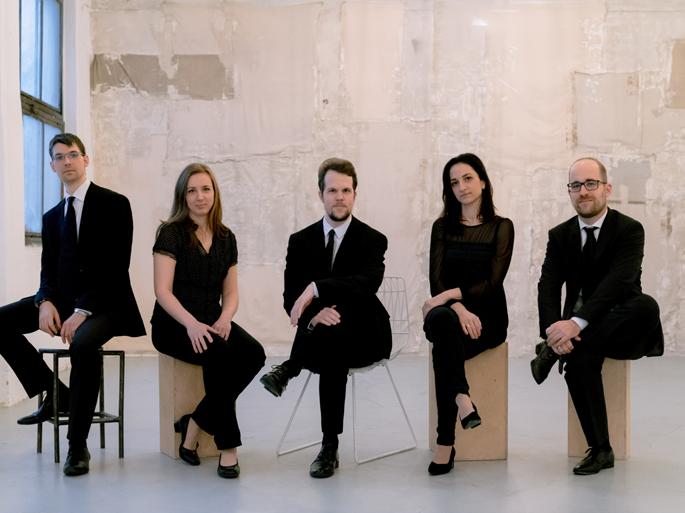
Pax et Bonum Kamarakórus
A Pax et Bonum Kamarakórus évek óta szorosan együttműködik Balogh Máté zeneszerzővel. Számos ősbemutatón kívül a kórus 2024 őszén négy koncertből álló sorozat keretében mutatta be Balogh Máté kórusműveit. Repertoárjukon a kortárs művek mellett kiemelt helyen szerepel a reneszánsz vokálpolifónia és a protestáns egyházzene. A 2022-es Kodály Zoltán Magyar Kórusversenyen első díjat nyertek kamarakórus kategóriában, és a kategóriagyőztesek közül végül ők kapták a verseny nagydíját is. Ligeti György születésének centenáriuma alkalmából felléptek a Budapest Music Center Ligeti 100 fesztiválján. 2024-ben az ausztriai Baden bei Wienben megrendezett Nemzetközi Ave Verum Kórusversenyen a kórus közönségdíjat, vezetőjük, Kiss Boldizsár pedig karnagyi különdíjat nyert. 2024 júniusában részt vettek a King’s Singers mesterkurzusán a Magyar Zene Háza szervezésében, ahová több mint 30 kórus közül választották be őket a világhírű énekegyüttes tagjai. Olyan rangos budapesti koncerttermek fellépői, mint a Zeneakadémia, a Magyar Zene Háza vagy a BMC.

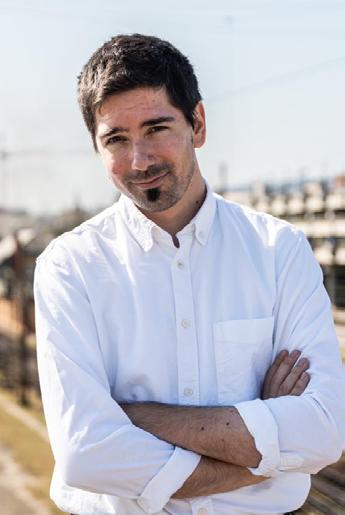
BALOGH Máté
Balogh Máté (1990) Erkel Ferenc-, Junior Prima és kétszeres Artisjusdíjas zeneszerző. Zeneszerzés-tanulmányait a Pécsi Művészeti Szakközépiskolában Győrffy István, a Liszt Ferenc Zeneművészeti Egyetemen Jeney Zoltán növendékeként végezte. 2013-ban egy évig a trieszti Giuseppe Tartini Konzervatóriumban, Fabio Nieder osztályában tanult. Műveit számos európai országban, valamint Kínában, Tajvanon, Japánban, Kanadában és az Egyesült Államokban mutatták be. Darabjaival rendszeresen nyer díjakat hazai és nemzetközi versenyeken, 2023 és 2025 között Prágától Washingtonig, Lyontól Bolognáig tíz nemzetközi megmérettetésen vett részt sikerrel.
FEHÉR Renátó Író, költő, Szombathelyen született (1989). Egyetemi tanulmányait az ELTE
BTK irodalom- és kultúratudomány szakán végezte, majd 2014-től ugyanitt volt doktorandusz. 2012–2013-ban és 2015-ben a prágai Károly Egyetem vendéghallgatója, 2016 őszén a prágai Václav Havel Könyvtár ösztöndíjas kutatója volt. Munkái folyóiratokban, antológiákban és önálló kötetekben jelennek meg. Verseinek első gyűjteményét (Garázsmenet) 2014-ben adta ki a Magvető Kiadó. Harmadik, Torkolatcsönd című könyve 2022-ben jelent meg, a kötet nyomán rendezett koncerten Fekete Gyula és Balogh Máté művei szólaltak meg.
ERŐS Hanna
Erős Hanna jelmez-, díszlet- és látványtervező, a Képzőművészeti Egyetem látványtervező művész mesterképzését 2023-ban fejezte be. A közelmúltban Kecskeméten, Szolnokon, Sepsiszentgyörgyön, Szombathelyen és Budapesten is dolgozott színházi előadások jelmez- és látványtervein, mások mellett Béres Attila, Bodó Viktor és Antal Bálint munkatársaként.
SZILVAY Máté
Szilvay Máté színházi rendező 2023-ban végzett a Marosvásárhelyi Művészeti Egyetemen, Bocsárdi László osztályában. Munkái többek között a székelyudvarhelyi Tomcsa Sándor Színházban, a sepsiszentgyörgyi Tamási Áron Színházban és a kolozsvári ZIZ-ben láthatók. Shakespeare Ahogy tetszik című színművének általa rendezett produkciója a 2021-es bukaresti Șerban Ionescu Fesztiválról elhozta a legjobb rendező és a legjobb előadás díját is. A Trafó Kortárs Művészetek Házában bemutatott Rakéták, szintik, istenek című előadása 2025-ben elnyerte a Fidelio Fortissimo díjat.
Máté Balogh, Renátó Fehér: Winter, or the Ear of the Wall – premiere I started working on Winter, or the Ear of the Wall in the autumn of 2021. Adéla Gálová, director of the Czech Centre in Budapest, commissioned me to make an audio play with a story about the Renaissance Revival house on the corner of Rózsa Street and Szegfű Street in Terézváros, which is still home to the Czech Embassy and the Czech Cultural Institute. According to the plaque by the entrance to the building, Emanuel Zima, who was the caretaker of the embassy before and during the war, hid, with the help of his son, Josef, thirteen persecuted Jewish citizens in the coal cellar in the basement during the Hungarian Nazis’ rule of terror and the siege of the city. Winter, or the Ear of the Wall is a hybrid of a docudrama and a lyrical monologue, with a reporter engaging in a dialogue with a chorus of survivors about what took place in the embassy building and its coal cellar in 1944 and 1945. At the same time, the sheltering cellar wall is given a voice: you can hear the murmur of the wall, its prayer, its testimony. This eye- and earwitness, which we thought was mute, speaks up and tells us what was written on it, what it absorbed, what its mould assimilated. It is the cellar wall that gives evidence about history, fear, the past and the present, with the conviction that there was and is love, solidarity and refuge even in times of aggression, contempt and genocide. The scarcity of sources made it necessary to build a fictional oral history around the available elements of reality. However, the staging and preservation of the story in itself, the self-evident nature of documentary realism, could only be a starting point. Therefore, rather than the routine solution of anecdotal plotting and characterization, I have taken as literary material the location and the milieu, the historical date and duration, and the effects and emotional experiences of temporary group identity, of being persecuted, being in hiding, being a survivor. Rather than evoking or simply narrating a series of events, I was looking for a way of communicating that permeates, imbues and becomes almost mantra-like. This aesthetic and rhetorical approach was also determined by Máté Balogh’s practice as a composer and our way of working together, whose beginnings go back almost a decade. The choral form was both a result of our shared creative interest and provided us with a dramaturgical framework. The tight, dark, claustrophobic refuge of the cellar ‘set the scene’ in a similar manner, offering linguistic inspiration. The imagined eternity of the months spent in the cellar, the disruption of a personal sense of time, also had poetic consequences, as it expanded the time of the piece, replacing historical time with a kind of alternative time. All this brought a universal breadth to the local story.
Living under threat, in hiding and confinement, being silent, vulnerable and insecure, being forced to trust and be intimate with others – these all became part of the creative concept, to be transformed from concept to composition. The lyrical register of the piece, the wall’s stream of consciousness, is thus characterized by an associative mode of linguistic construction, a kaleidoscope of language that seems to churn live speech, found texts, cultural references, fragments of memory, shapes of silence, word of mouth, bodily, material and environmental noises.
The monologue of the testimony thus becomes at once agitated and contemplative, orderly and chaotic, concrete and abstract, lively and lethargic. For what kind of terror and loss is brought to life in crystal clear sentences and not in their wreckage? For me, poetry leads through these ruins, through the rubble: it is in this oppressive and liberating frontier zone of speech and silence that we must seek the remaining words for consolation. (Renátó Fehér)
Katalin LADIK
Born in Újvidék (Novi Sad, Serbia), Katalin Ladik is a poet, performance artist, singer, actor and visual artist. She has written poems, sound and visual poetry, as well as prose; her first novel, Can I Live on Your Face? was published in 2007. In her performances, she uses her own body and voice as her medium. She was a member of the Bosch+Bosch group in the 1970s, taking part in numerous happenings and actions and joining the mail art movement. In 1978, she presented visual poems and collages at the Venice Biennale. Between 1977 and 1992, she was an actor with the Novi Sad Theatre and starred in several TV features. She was awarded the Kassák Lajos Prize in 1991, the József Attila Prize in 2001, and in 2016 Yoko Ono named her the recipient of the LennonOno Grant for Peace. In 2017 she was invited to the Documenta in Kassel. As a singer, she has collaborated with remarkable artists of Croatian, Serbian and Hungarian contemporary music.
Eszter BALOGH
Born in Transylvania, the mezzo-soprano started her musical studies in the Hungarian Radio Children’s Choir. She obtained her master’s degree as an oratorio and lieder singer in 2014 from the Liszt Academy. In 2019 she won the London Handel Singing Competition. Her repertoire extends from the Baroque through Romanticism to contemporary music. She is widely employed in the Hungarian concert scene. She is regularly featured as a soloist with the baroque ensemble of the Budapest Festival Orchestra, György Vashegyi’s Purcell Choir
and Orfeo Orchestra, the Budafok Dohnanyi Orchestra and the MÁV Symphony Orchestra. The conductors she has appeared in concert with include Ken-Ichiro Kobayashi, Péter Oberfrank, István Dénes, Gábor Hollerung, Pál Németh and László Kovács. In 2016, she sang the alto solo in Johann Sebastian Bach’s St John Passion under the baton of Helmuth Rilling. She made her debut at the Hungarian State Opera in 2014, singing Costanza in Haydn’s L’isola disabitata. In 2018, she sang Prince Orlofsky in the production of Johann Strauss’s The Bat at the Pécs National Theatre. The same year, she performed the lead role in Leonard Bernstein’s opera, Trouble in Tahiti, in Müpa Budapest.
Boldizsár KISS
Boldizsár Kiss is a lecturer at the Kodály Institute of the Liszt Academy, a doctoral student at the Liszt Academy, and has been the director of the Pax et Bonum Chamber Choir since 2022. He studied at the Liszt Academy under István Párkai, Péter Erdei and Csaba Somos, and also studied with Jörg-Peter Weigle at the Hanns Eisler Hochschule für Musik in Berlin on an Erasmus scholarship. Between 2016 and 2019, he worked as deputy choirmaster and coach of the Children’s Choir of the Hungarian State Opera. Between 2017 and 2023, he taught at the Szent István Király Musical Grammar School, and from 2019 to 2025, he conducted Hungary’s only professional women’s choir, the Béla Bartók Chamber Choir Szolnok. He premiered several of Balogh’s works with the women’s choir of Szolnok.
Weiner Ensemble
The Weiner Ensemble was founded in September 2014 by finalists and doctoral students of the Liszt Academy under the direction of Márta Gulyás. In 2016, the Weiner Ensemble won third prize at the Orlando International Chamber Music Competition in Kerkrade, the Netherlands, and was invited to perform at the Orlando Festival. They also had the opportunity to participate in the masterclasses of Henk Guittart, James Austin Smith, Alan R. Kay and the Lafayette Quartet. The ensemble strives to expand the literature of what is called the Pierrot ensemble, after Schönberg’s Pierrot lunaire, a composition for speak-singing (Sprechgesang) and five instrumentalists. The orchestra’s repertoire ranges from solo pieces from the Baroque period to contemporary compositions for ensembles by the youngest generation of composers. In 2023, the Weiner Ensemble created its own contemporary music education programme, the COnteMPASS Workshop, which aims to introduce students in secondary music education to the history and language of contemporary music through the works of contemporary Hungarian composers. The programme has reached over 700 students in eleven institutions.
Pax et Bonum Chamber Choir
The Pax et Bonum Chamber Choir has been working in close collaboration with composer Máté Balogh for years. In addition to several premieres, the choir presented the choral works of Máté Balogh in a series of four concerts in the autumn of 2024. Besides contemporary works, Renaissance vocal polyphony and Protestant church music form an important part of the choir’s repertoire. In 2022, Pax et Bonum won the first prize in the chamber choir category at the 9th Kodály Zoltán Hungarian Choir Competition, and was also awarded the Grand Prize of the competition as the best category winner. In the centenary year of György Ligeti’s birth, they performed at the Ligeti 100 Festival, which featured international artists at the Budapest Music Center. In 2024, at the 6th International Ave Verum Choir Competition in Baden bei Wien, Austria, the choir won the Audience Award and Boldizsár Kiss, the choirmaster, was given the Choirmasters’ Special Award. In June 2024, the Pax et Bonum Chamber Choir participated in the King’s Singers Masterclass organized by the House of Music Hungary, where they were selected from more than 30 choirs by the members of the world-famous vocal ensemble. They regularly perform in the most important concert halls in Budapest, including the Liszt Academy, the House of Music Hungary and BMC. PAX ET BONUM CHAMBER CHOIR
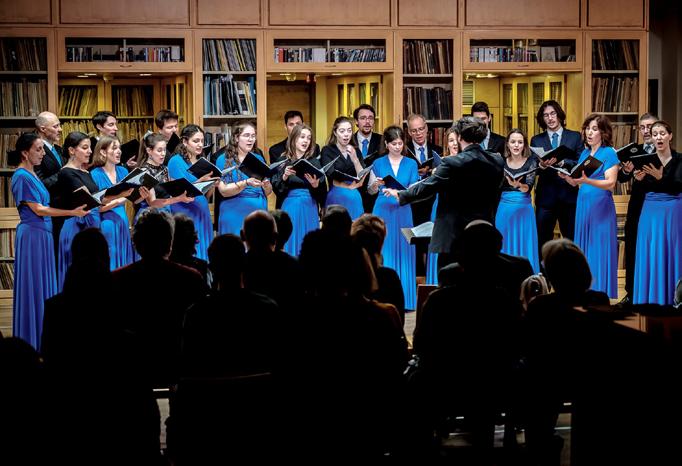
Máté BALOGH
Máté Balogh (b. 1990) is the winner of the Erkel Ferenc and Junior Prima Prizes, and two Artisjus Awards. He studied composition at the Pécs Secondary School of Arts with István Győrffy, and the Liszt Academy with Zoltán Jeney. In 2013, he studied for a year at the Conservatorio Giuseppe Tartini in Trieste, in Fabio Nieder’s class. His works have been performed in several European countries, as well as in China, Taiwan, Japan, Canada and the United States. His compositions regularly win prizes in national and international competitions, and between 2023 and 2025, he participated successfully in ten international competitions, from Prague to Washington, and from Lyon to Bologna.
Renátó FEHÉR
The writer and poet was born in Szombathely in 1989. He studied literature and cultural studies at Eötvös Loránd University, and began the PhD programme of the same institution in 2014. He was a visiting student at Charles University in Prague in 2012–2013 and in 2015. In the autumn of 2016, he was a research fellow at the Václav Havel Library in Prague. His works appear in journals, anthologies and self-contained volumes. Magvető Publishers brought out Garázsmenet, his first volume of poetry, in 2014. His third book, Torkolatcsönd, was published in 2022, and the concert based on it featured the works of Gyula Fekete and Máté Balogh.
Hanna
ERŐS
Hanna Erős is a costume, set and production designer, who earned her master’s degree from the University of Fine Arts in 2023. Recently, she has created costumes and production designs for theatre productions in Kecskemét, Szolnok, Sepsiszentgyörgy (Sfântu Gheorghe, Romania), Szombathely and Budapest, working with directors Attila Béres, Viktor Bodó and Bálint Antal, among others.
Máté SZILVAY
Máté Szilvay graduated as a theatre director in 2023 from the University of Arts Târgu Mures, in the class of László Bocsárdi. His productions can be seen in the Tomcsa Sándor Theatre in Odorheiu Secuiesc, the Tamási Áron Theatre in Sfântu Gheorghe and the ZIZ in Cluj-Napoca. His production of Shakespeare’s As You Like It won the Best Director and Best Performance awards at the 2021 Șerban Ionescu Festival in Bucharest. His Rockets, synths & gods, produced for Trafó – House of Contemporary Art, won the Fidelio Fortissimo Prize in 2025.
A Liszt Ünnep Nemzetközi Kulturális Fesztivál ingyenes kiadványa
Kiadja: Müpa Budapest Nonprofit Kft.
Felelős kiadó: Káel Csaba vezérigazgató Nyomdai kivitelezés: Pátria Nyomda Zrt.
A címlapon: Ladik Katalin
Címlapfotó: Glázer Attila
Szerkesztő: Molnár Szabolcs
A szervezők a szereplő- és műsorváltoztatás jogát fenntartják.
E-mail: info@lisztunnep.hu
Telefon: +36 1 555 3000
